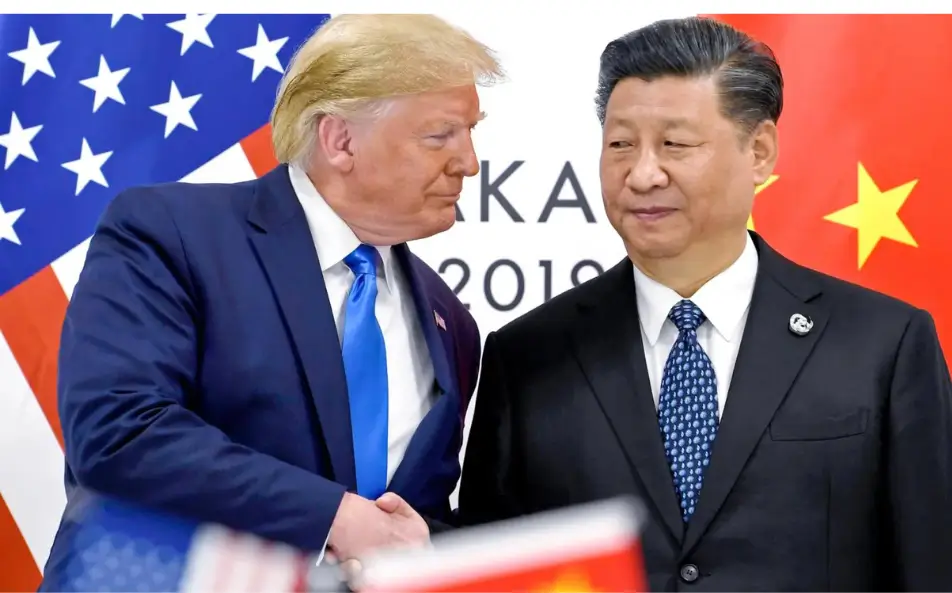CA
Thu, Dec 18, 2025 | 07:56 AM IST
| Delhi | 12°C

The United Indian



In a move that rippled through markets and newsrooms, former US President Donald Trump announced a cut in tariffs on Chinese imports from 57% down to 47%. The announcement followed what he described as an “amazing” Trump Xi meeting in Beijing, where the two leaders pledged to “reset the economic narrative.”
This development has reshaped the tone of the US China trade deal, offering a glimpse of potential calm after years of economic sparring. For American industries that depend on Chinese manufacturing, and Chinese exporters who have felt the sting of trade restrictions, the news is being received with both relief and cautious optimism.
Diplomacy often hides its sharpest edges behind polite smiles. The Trump Xi meeting was not merely about photo-ops or polite exchanges; it was about signaling a strategic shift. Trump, speaking afterward, called President Xi “a strong partner” and hinted that this thaw could open “one of the greatest trade windows of our century.”
Both sides understand the stakes. China’s manufacturing recovery depends on exports, and the US, still wrestling with inflation, needs cheaper imports to cool consumer prices. The US China trade deal is therefore not just about politics it’s an instrument for economic balance.
Tariff reductions are the headline, but several other adjustments are in the fine print:
These details give substance to what might otherwise sound like a routine diplomatic success story. They suggest a push to repair what years of mutual suspicion have eroded.
Few expected fentanyl to feature in the Trump Xi meeting, yet it became a key talking point. Trump pushed for stricter oversight of the chemical supply chain; Xi agreed to share data and tighten controls.
It’s an unusual turn trade and public health crossing paths but it reflects a new realism. Both nations now see that economic cooperation can’t be separated from human consequences.
The US China trade deal adjustment is expected to ripple across several industries. American tech firms are likely to benefit first, as electronics and raw materials become cheaper. For small businesses dependent on Chinese supply chains, this could mean reduced costs within months.
However, not everyone is cheering. Economists close to Washington caution that easing tariffs might dampen incentives to diversify away from China. They argue the US should continue encouraging supply chain shifts to countries like Vietnam or India. Meanwhile, Chinese economists see the tariff cuts as validation of Beijing’s patience, suggesting that “economic pragmatism has finally returned.”
This story also falls squarely under Trump news for another reason it’s political strategy. Trump has long tied foreign policy to domestic politics. By softening tariffs while emphasizing “American benefit,” he positions himself as both a dealmaker and a pragmatist.
Analysts believe the Trump Xi meeting was designed not just for policy but for image. With elections looming, Trump appears eager to showcase global relevance and his knack for breaking economic stalemates. His rhetoric after the talks praising Xi but insisting on “watchful partnership” - was vintage Trump: praise mixed with a warning.
Beijing, on its part, has remained diplomatic yet measured. State media highlighted “stability and mutual benefit,” echoing the theme of the US China trade deal. Behind the scenes, Chinese officials view this as a temporary relief from external pressure. Tariff relief can help boost exports and stabilize yuan volatility.
The symbolism matters, too. China sees this as acknowledgment that Washington needs cooperation more than confrontation. The Trump Xi meeting reaffirmed that neither side benefits from a prolonged trade war especially when global growth is already fragile.
Markets tend to digest such news faster than politicians. Wall Street reacted positively to the tariff cut, with the S&P 500 climbing modestly on expectations of lower input costs. Asian indices mirrored the optimism. Meanwhile, commodity traders eyed the announcement carefully, anticipating fresh movement in copper and aluminium prices tied to manufacturing growth.
However, business leaders remain cautious. Trade deals have been announced before, only to be reversed amid tension. This time, skepticism comes not from policy but from consistency. Will both sides follow through?
The US China trade deal isn’t just a two-nation story it’s a pulse point for the world economy. When the two largest economies shift direction, smaller nations have to adjust. Southeast Asia’s exporters, for instance, now face the possibility of losing demand as US buyers return to Chinese suppliers.
Meanwhile, discussions of China tariffs remain politically charged in Washington. Many lawmakers argue that reducing tariffs might look like rewarding Beijing. The White House, however, frames it as economic necessity, insisting that “American households benefit more than China does.”
Lost in the numbers is the social dimension. Lower tariffs can mean cheaper consumer goods, from electronics to clothing. For working families, this translates into real savings. On the other hand, continued cooperation on fentanyl might save lives potentially thousands by tightening export monitoring at the chemical source.
In essence, trade diplomacy is no longer about who wins the negotiation; it’s about who can afford to ignore the consequences of not talking.
The Trump Xi meeting has reminded policymakers that personality often drives policy. The rapport between two leaders publicly described as “amazing”- might temporarily defuse a rivalry that has shaped the decade. Yet beneath the smiles, both governments are calculating.
For Trump, this is a chance to reframe his global image. For Xi, it’s proof that patience and strategic calm can pay off. The world, meanwhile, watches for what happens when both men’s ambitions intersect with markets and ordinary people’s wallets.
The US China trade deal is still far from a full reconciliation. There are unresolved issues intellectual property rights, cybersecurity and semiconductor restrictions that will decide the future tone of cooperation. Yet, this week’s step signals that the dialogue door is open again.
Whether this spirit of agreement survives the next election cycle or another round of sanctions remains to be seen. But for now, the fact that two superpowers are talking, not tweeting barbs, is already progress.
The first wave of tariff cuts marks more than a trade shift it’s the soft sound of global tension easing, even if briefly. From tariffs to fentanyl, from Trump news headlines to market graphs, this moment reminds us that global politics runs on fragile balance sheets and human judgment.
As The United Indian observes, diplomacy is rarely about perfection-it’s about participation. The world doesn’t always need leaders who agree; it needs leaders willing to meet halfway, even if only for an “amazing” handshake.
Everything you need to know
The recent announcement confirms that tariffs on key Chinese goods-electronics, textiles, and machinery will be reduced from 57 percent to 47 percent. It’s part of a larger effort to ease trade tension following the Trump Xi meeting and to stabilize global supply chains that have been strained since 2018.
In plain terms, they decided to lower tariffs on several categories of goods mainly electronics, machinery, and textiles. It’s not a full reset, but it’s the first sign of real movement after years of economic fencing. Both sides framed it as a practical step rather than a political win.
Not quite. It’s more like a ceasefire. The deeper disputes over tech transfers, security, and intellectual property are still unresolved. But the tone has shifted. For the first time in a long while, both sides are talking instead of trading threats.
That surprised everyone. During the Trump Xi meeting, Trump linked trade to the U.S. opioid crisis, pressing for better control over fentanyl exports. Xi agreed to cooperate on monitoring chemical shipments. It’s a rare example of two superpowers tackling a public health issue through trade diplomacy.
A little yes, but not overnight. When China tariffs drop, the effect trickles down through importers and retailers. Over the next few months, Americans could see slightly lower prices on phones, tools, and clothing. For Chinese workers, it might mean steadier factory shifts and more export orders.
#weareunited
We respect your privacy. Unsubscribe at any time. Privacy Policy
Dec 15, 2025
TUI Staff
Dec 04, 2025
TUI Staff
Nov 14, 2025
TUI Staff
Nov 12, 2025
TUI Staff
Comments (0)
Be the first to comment!